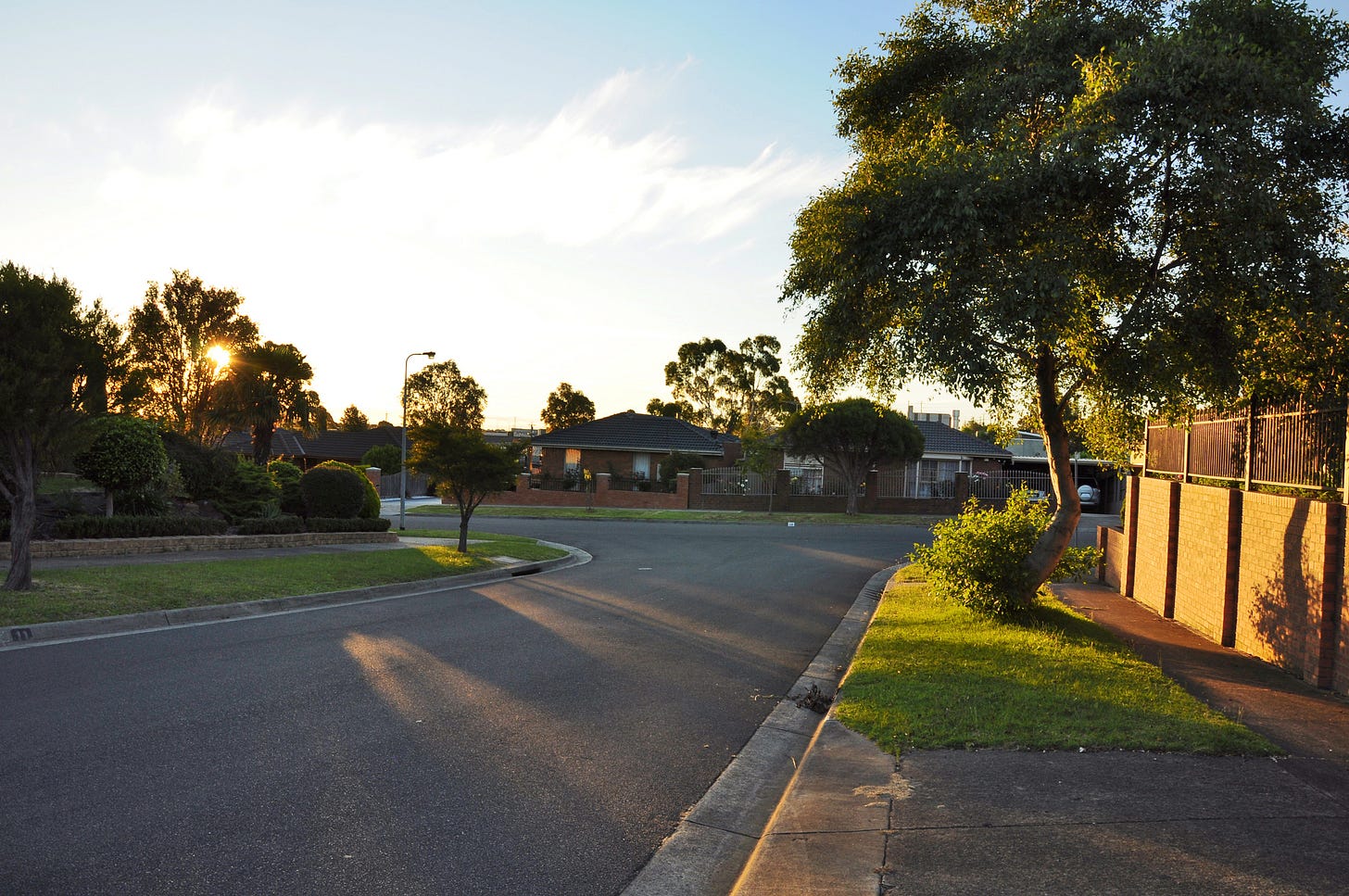Groundswell Property's Market Insights
Rates Cut, Borrowing Power Up, Regional Markets Continue to Surge: Key Insights as at 22 February 2025
Welcome to your weekly edition of Groundswell Property’s Market Insights, where we bring you the latest trends, research, and expert opinions shaping real estate across Australia.
With the Reserve Bank cutting interest rates for the first time in over four years, borrowing power is increasing, and property values continue to rise—particularly in regional areas. Meanwhile, vacancy rates remain critically low, and investor activity is hitting record highs.
Key highlights this week:
✔️ RBA cuts interest rates 🏦 – Lower repayments and increased borrowing capacity could drive more buyer demand.
✔️ Vacancy rates tighten further 📉 – Australia’s rental crisis deepens, with national vacancy rates falling to just 1%.
✔️ Borrowing hits record highs 💰 – Investors and homeowners are taking on bigger loans as prices continue to rise.
✔️ HECS no longer a major borrowing barrier 🎓 – Banks will exclude HECS repayments in certain mortgage assessments, making it easier for young Australians to buy.
✔️ Regional markets outperform capitals 🌄 – More buyers are heading to the regions as affordability pressures grow.
As always, our goal is to provide evidence-based insights to help you make informed property decisions—whether you're buying, selling, or simply keeping a pulse on the market. Let’s dive into the data and insights shaping the year ahead.
RBA Delivers Long-Awaited Rate Cut
Home buyers are likely to have more borrowing capacity following the Reserve Bank of Australia’s move to cut interest rates at its first meeting for 2025.
The RBA cut interest rates by 0.25%, dropping the official cash rate to 4.1%. It is the first rate cut since November 2020.
A number of Australia’s leading banks had already made cuts to fixed rates in the past month in anticipation of the move, and Westpac cut its variable rate by 0.4% on the eve of the RBA meeting.
The RBA cut is the first change in rates since November 2023, when rates were raised to 4.35%.
According to Canstar, the rate cut will reduce weekly repayments by $92 for borrowers with a loan of $600,000. A weekly repayment on a $750,000 loan will drop by $115.
NAB, Westpac, Commonwealth Bank and ANZ have already announced they will pass on the full rate cut, although it can take up to two weeks for changes to be implemented by some banks.
Rental Vacancies Tighten
Vacancy rates continue to remain tight throughout Australia, falling again in January to just 1%.
SQM Research data says vacancy rates reduced by 0.5% in January, which is traditionally a busy month in the rental market as workers and students relocate for the start of the business and school year.
The drop means there are only 31,822 available for rent, and SQM Research managing director, Louis Christopher predicts further tightening.
“It looked like there was an easing in the vacancy rate at the end of 2024 and we were coming out of the rental crisis, but that’s not the case now,” he says.
“The rental vacancy rates have tightened up once again to some of the worst numbers we’ve seen during this rental crisis.”
Christopher says the vacancy rate in Hobart is just 0.3%, which is the lowest since SQM Research began keeping records in 2005. The smaller capital cities are feeling the pinch with Perth (0.4%), Adelaide, (0.5%) and Brisbane, (0.8%) also below the national level.
Darwin is 1.1%, Canberra, 1.3%, Sydney, 1.4% and Melbourne 1.5%
Despite the tightening of vacancy rates, the median average weekly asking rent of houses is unchanged at $718, and units are down 1.2% to $557.
Borrowing Reaches All-Time High
The average size of owner-occupier loans has hit an all-time high.
New Australian Bureau of Statistics data shows the average loan is now $666,000, following a $25,000 increase in the last quarter of 2024. It is 4% higher year on year.
As property prices continue to rise so too has the value of loans to investors, reaching an all-time high of $674,000 following a $25,000 increase over the last quarter of the year.
First-time buyers are also becoming more active with the number of new owner-occupier first-home buyer loans up 1.3% during the quarter.
Dr Mish Tan, ABS head of finance statistics, said that in the December quarter, there were 48,876 new investment loans approved.
Investors are particularly active in Western Australia with loans up 55.9% in the past 12 months, while Queensland is up 40.9% and South Australia is up 40.7%.
The largest increase in the value of investment loans is in Queensland (+19.6%), Victoria (+12.3%) and New South Wales (+10.6%).
HECS No Longer a Barrier to Borrowing
Having a university HECS debt will no longer be seen as a major barrier by banks to entering the property market.
At the urging of the Federal Treasurer, APRA, the financial regulator, will tell banks they can exclude HECS repayments from serviceability assessments for home loans if the debt is to be paid off in the short term.
In these circumstances, it will be excluded from debt-to-income reporting purposes.
Previously, banks had some issues when lending to borrowers with HECS debts as repayments of those loans change as the borrower’s income changes.
Australian Banking Association chief executive Anna Bligh says the changes may unlock more credit for some borrowers while Treasurer Jim Chalmers believes it will help more young Australians buy a home.
"We need to recognise that student debt is different to other kinds of debt," he says.
"We want to make sure that people with student debt aren't disadvantaged when it comes to getting a mortgage."
About 3 million Australians have a HECS debt, with the average debt being $22,000.
Regions Continue To Fire
Regional property markets are still firing, with new data showing values are growing faster than capital city markets.
In the three months to January, property values rose in almost three-quarters (72.6%) of regional suburbs and about half (51.4%)of capital city suburbs, according to CoreLogic data.
CoreLogic economist Kaytlin Ezzy says affordability pressures are continuing to push more buyers into regional areas.
“With demand skewing towards the more affordable end of the market, it’s not surprising to see value growth shift away from the capitals, towards the regions, as cash-strapped buyers look further afield for more affordable markets,” Ezzy says.
And even within the regional markets, buyers are looking for bargains with strong demand in the most affordable quartile, driving values up by 9.4% in 2024.
Ezzy says the ongoing demand for regional properties shows that the remote and hybrid work model is here to stay.
“With more people able to prioritise lifestyle over job location, the flow of internal migrants to regional markets has settled higher than the levels seen pre-Covid, helping to support housing demand.”
Key Takeaways
The latest RBA rate cut is a turning point—it could mark the start of a new phase in the property cycle, where confidence returns and competition heats up. For buyers, waiting may cost you more down the track.
With rents still climbing and supply tightening, investors are seeing strong returns—but the key is knowing where to buy and when to act. Meanwhile, affordability challenges in capital cities are driving more demand into regional markets, a trend that looks set to continue.
As always, success in property comes down to having the right information, the right team, and the right strategy. If you want to make your next move with the confidence and preparedness needed to get the best result: Contact Tom on 0439754475
Thanks for joining us, see you next Saturday with more insights. We look forward to supporting you in achieving your property investment goals in 2025
Tom Haigh
Director & Licensed Buyers Agent
Groundswell Property - Established 2015
tom@groundswellproperty.net
0439754475







